
 Photography by John Jackson
Photography by John Jackson“My dad was an autobody man for a shop in Queens (New York),” Chuck Wray says. “We didn’t have much money. So I read used hot rod magazines that I got from the guys in the shop and I fell in love with the hot rods I saw in the little books, like Rod & Custom and Rodding and Re-styling. I liked that late-’50s/early-’60s look.
“I became a restorer,” Chuck continues, “mostly working on Italian exotics. Back in 1995, you [Ken Gross] wrote an article in The Rodder’s Journal about a chopped-and-channeled 1932 five-window highboy coupe that was built by Donn Lowe in Oregon. When I saw that car I was just blown away. I wanted to build the car I thought they should have used in American Graffiti. I never liked Milner’s coupe. So, when I saw Donn Lowe’s car, I felt that was what they should have used in the movie.”

“I loved that red coupe, but I thought if I built it I’d probably put a 409 in it–I have a thing for 348s and 409s. I went out to visit Donn Lowe in Oregon to start the project, but the money I’d set aside got repurposed so I couldn’t make it happen. Twenty years went by. I was always casually looking for a 1932 coupe body shell. Finally, my friend Mike Limerez found an original body. Meanwhile, I kept seeing articles about this guy Bobby Hilton and I liked what he was building.”
Chuck realized he’d be better off working with a hot rod builder than trying to build a car by himself. “I can restore Ferraris and Isos all day long, but I could never find time to build a hot rod. Five minutes after I met [Hilton], who’s a pretty contagious guy, this coupe project was underway. He’s a ‘real deal’ hot rodder, so I knew it would get done.”
This car looks like it’s on fire and there’s a story there, too. “I originally wanted it to be yellow,” Chuck says. “But [Hilton] didn’t like that. Then I decided on a 1961-1962-era candy color. [Hilton] introduced me to Tuki (aka Travis Hess, of Bucky’s Limited in Martinsburg, West Virginia). [Hess] started with a Cinder Red base and topped it with five coats of House of Kolor Candy Tangerine.” It practically glows in the dark.
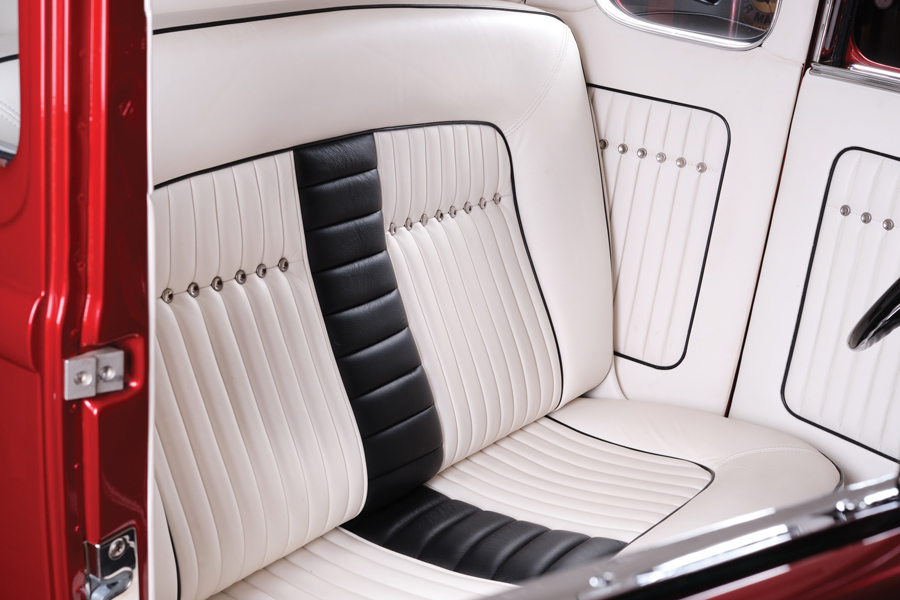
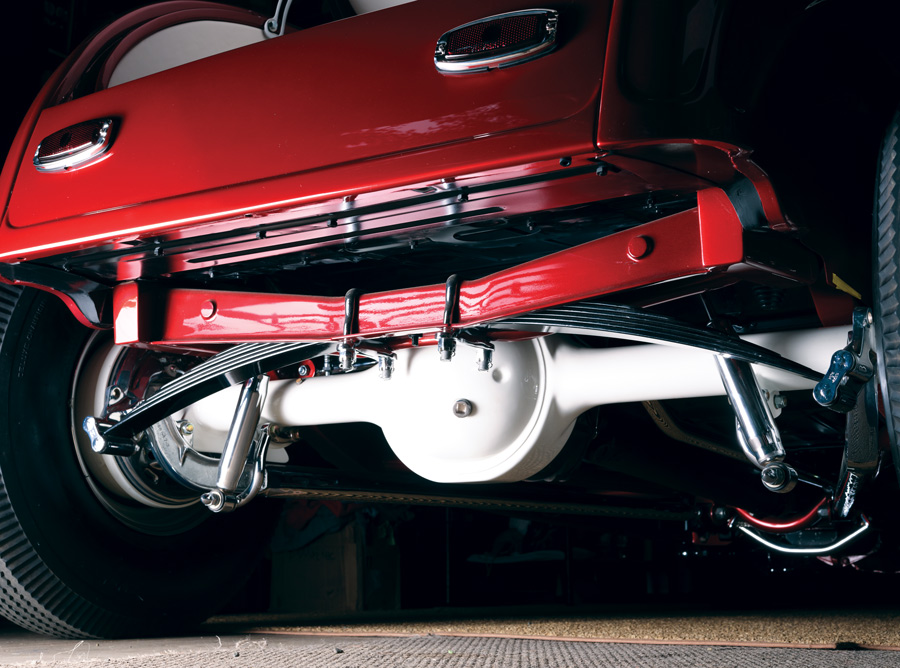
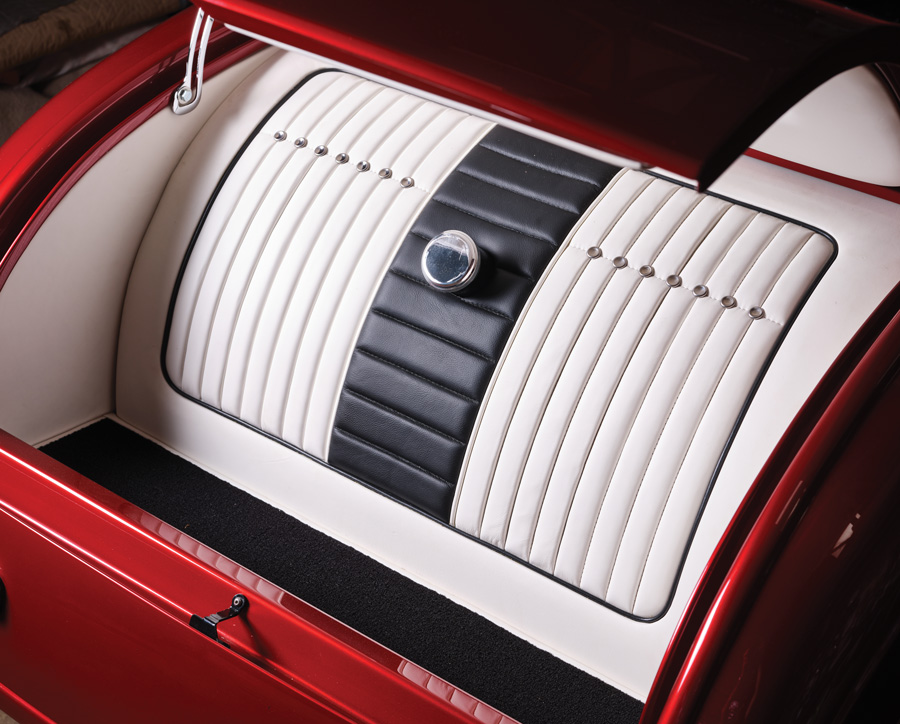
The result is a period-correct chopped-and-channeled East Coast–style five-window, but there’s a lot of subtle trickery here. Hilton explains: “Chuck saw some of my ‘Angry’ Model As, and he already had that vision of the Donn Lowe car. So, we talked, and he said ‘go for it.’” That’s exactly the kind of commission Hilton likes. “My mind works in a thousand ways. So, this car’s got all the bells and whistles.”
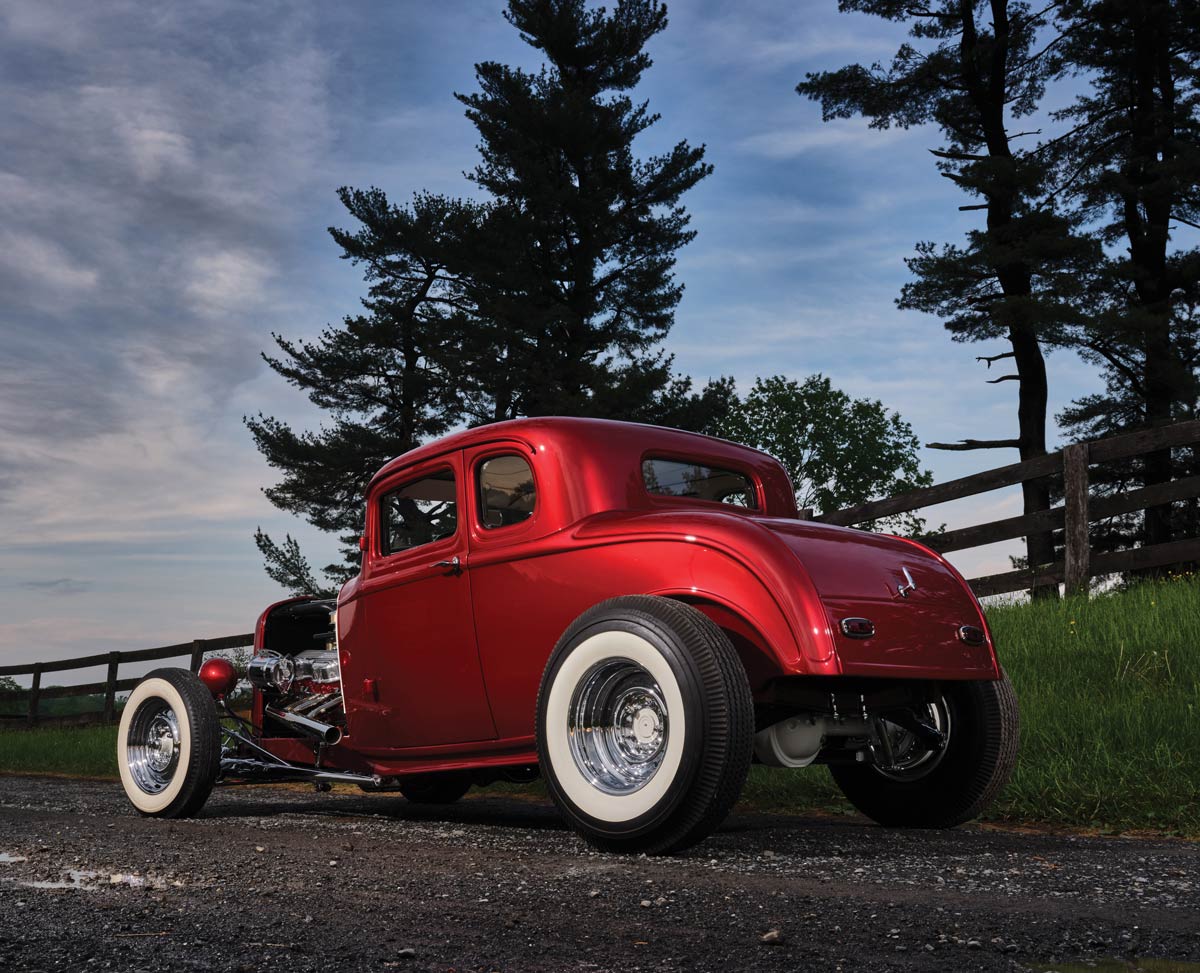
The vintage 409-cid Chevy block was massaged by Tony Lombardi and his talented crew at Ross Racing Engines. It’s a full race-spec engine with custom-forged pistons, a Ross hydraulic roller cam, and that Weiand Stromberg sextette. Lombardi converted the Mallory igniter to MSD electronics. The big V-8 idles with a meaty rumble that makes you certain it can deliver 500 bhp. It’s matched to a T5 TREMEC transmission that grabs power from a Centerforce clutch and pressure plate. An open driveline runs back to an early Ford 9-inch rear that’s been smoothed and painted. Ford transverse leaf buggy springs are used front and rear. The dropped front axle was plated, as were the split wishbones, Dodge shock mounts, and nearly everything else in the suspension. The steering box is from a Ford F-100. The radius rods and trailing arms are 1936 Ford. 1940 Ford hydraulics with finned Buick drums up front are mated with chromed reversed 15-inch Ford steel wheels and whitewalls–evoking the early ’60s.
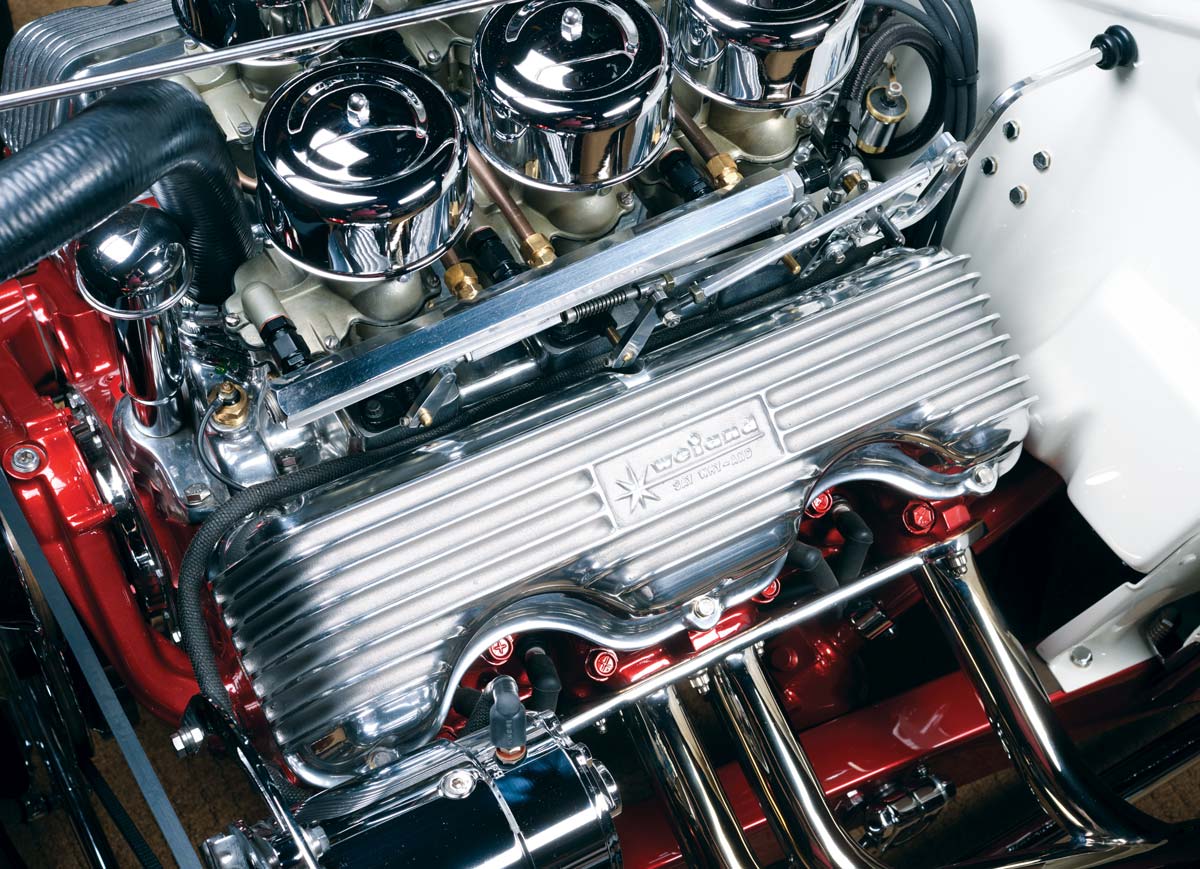
“Next, we sectioned the chassis ’rails and I set the body down into the chassis 2 inches.” If you think about a traditional channeled car, the floorpan is cut out and the body is dropped over the framerails, usually the full depth of the ’rails. In this car, the center of the framerail is now 4 inches. Hilton explains: “At the firewall, I cut down into the chassis and sectioned it (all the way up) to where the ’rail starts to kick up and go over the rear axle and then it chases back to the natural 4 inches of a Deuce chassis. We sat the body down into that pocket. All I had to do was release the floorpan and set the body down into it.” Hilton modified the framerails to achieve the channel effect. “The firewall is sectioned that same 2 inches, and I sat it on top of the frame, to give you the illusion of a classic channel.”
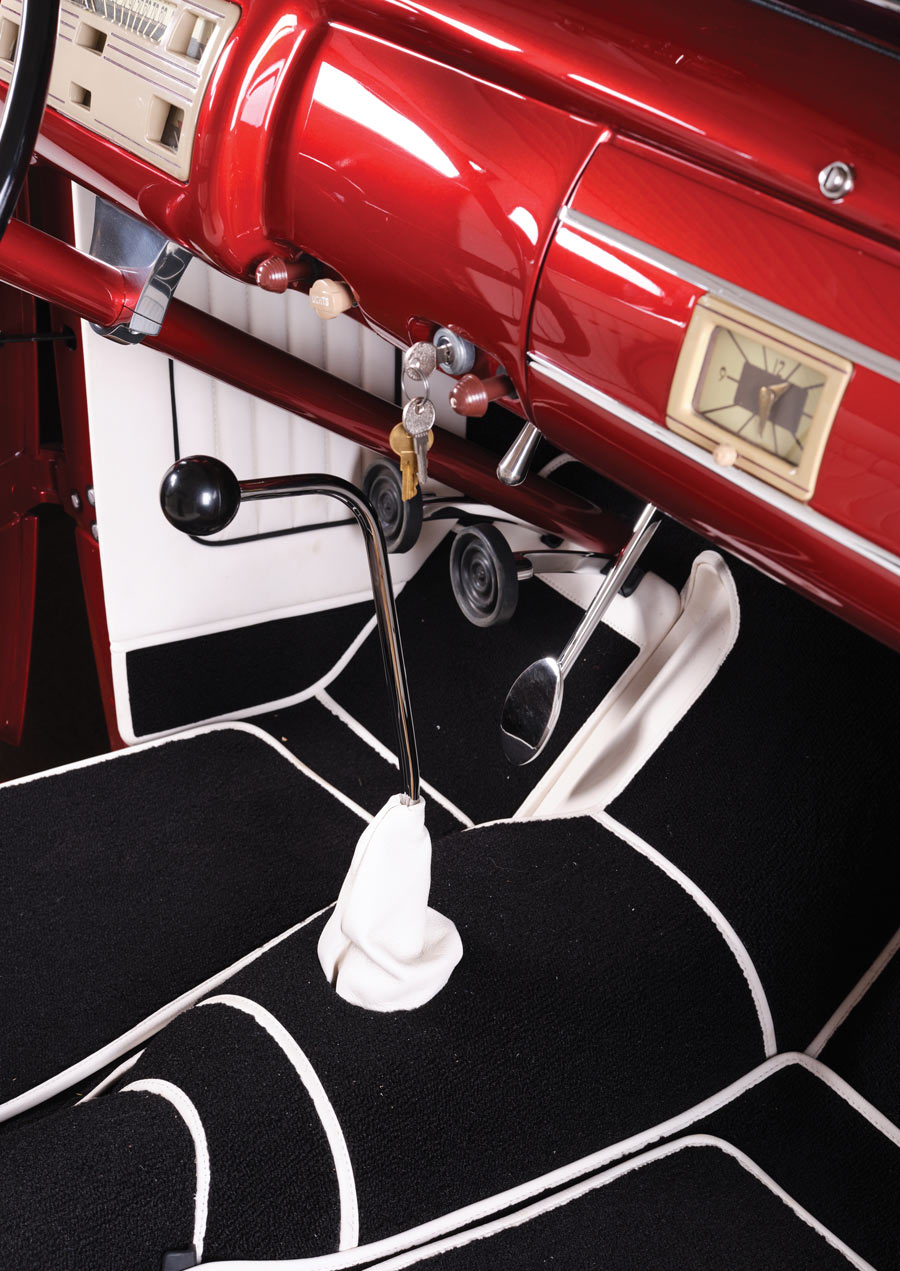
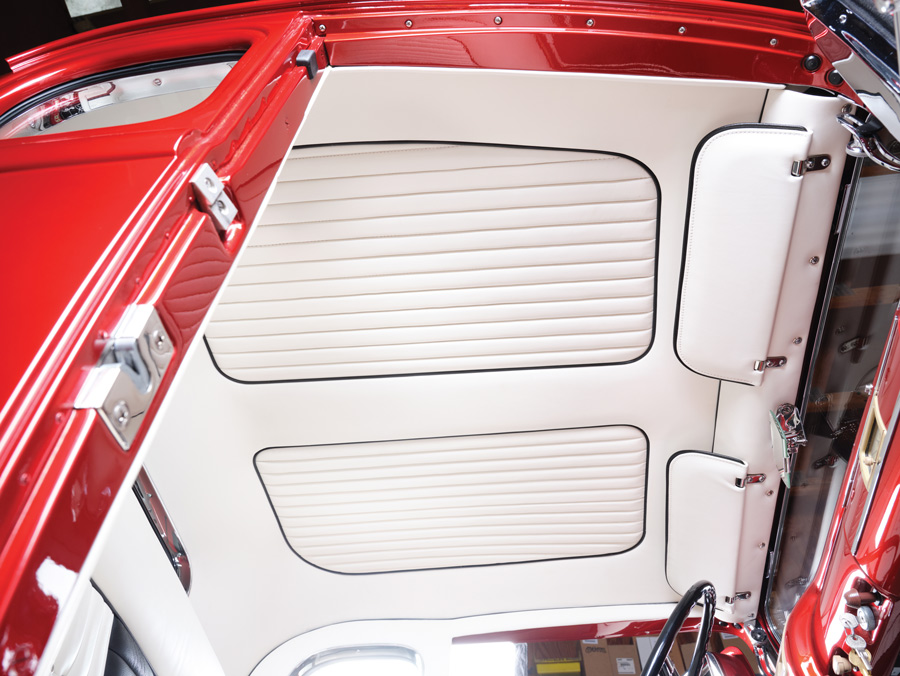
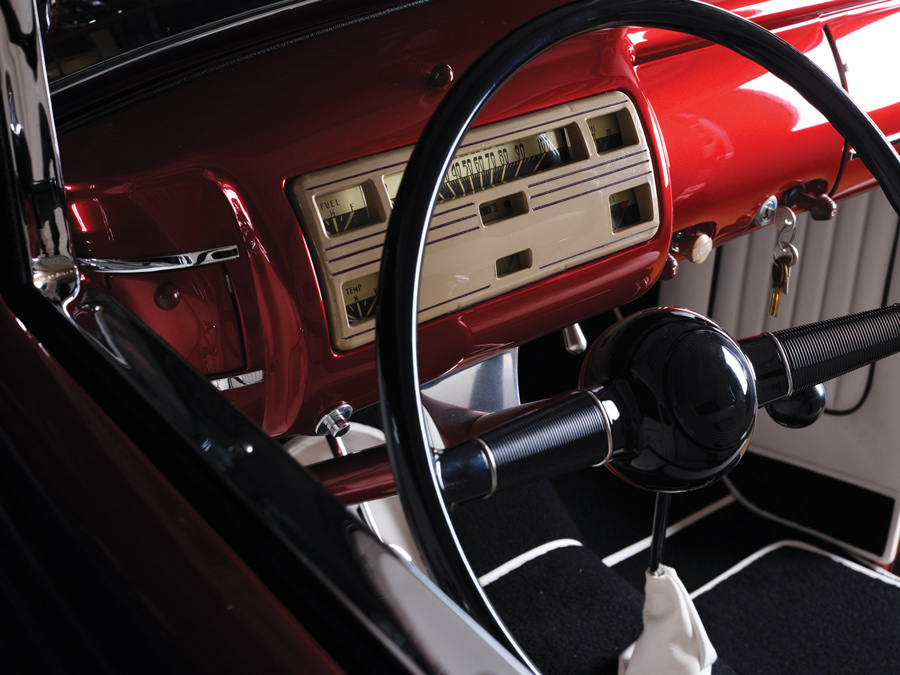
“The 1940 Ford dash is an original piece that I found from a collector in Charlotte. To make it all fit, I sectioned the original dash panel in the middle because the 1932 body is narrower than the 1940. I might put a radio grille in it, or a ‘Tommy the Greek’ pinstripe where the speaker was. To keep tradition going, we left the ashtrays. Classic Instruments rebuilt all the gauges. They offered to give us an all-new 1940 insert panel, but Chuck wanted the original one restored. That’s a traditional look for this car. The newer panel makes it look like an autoMObile …”
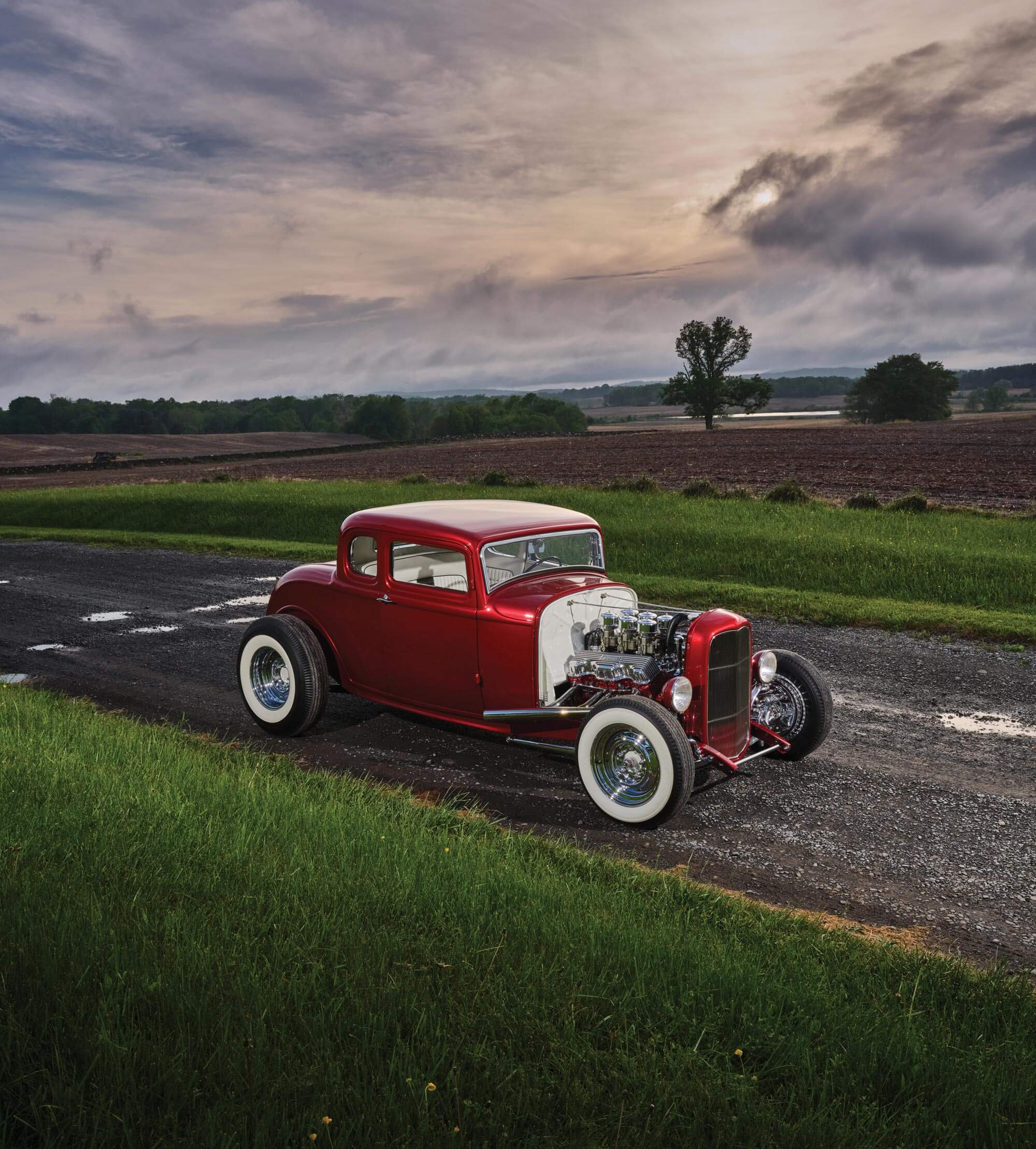
Inside, Mike Lippincott (Mikeyseats) crafted a period-perfect white tuck ’n’ roll interior, including the headliner, that’s accented in places with discrete plated buttons. The fuel tank is also wrapped in white tuck ’n’ roll and the lush carpeting is black cut pile with white edging. It looks like something Gaylord of Hollywood might have done for George Barris. The workmanship is sublime. An Art Deco 1940 Ford steering wheel in black complements the threads.

Chuck Wray is delighted, and he’s looking forward to driving his new car. “In the big scheme of things,” Chuck says, “I am very grateful that I’ve accomplished a goal that I set out to do 51 years ago. I thank [Hilton], and I’m grateful to have made new friends in the hot rod community.” And there are future plans. “I’m already dreaming about the next hot rod to build, a more usable car like a 1933-1934 coupe that’s very old school with Olds or Caddy power. But I have to finish paying for this hot rod before I start worrying about the next one.”